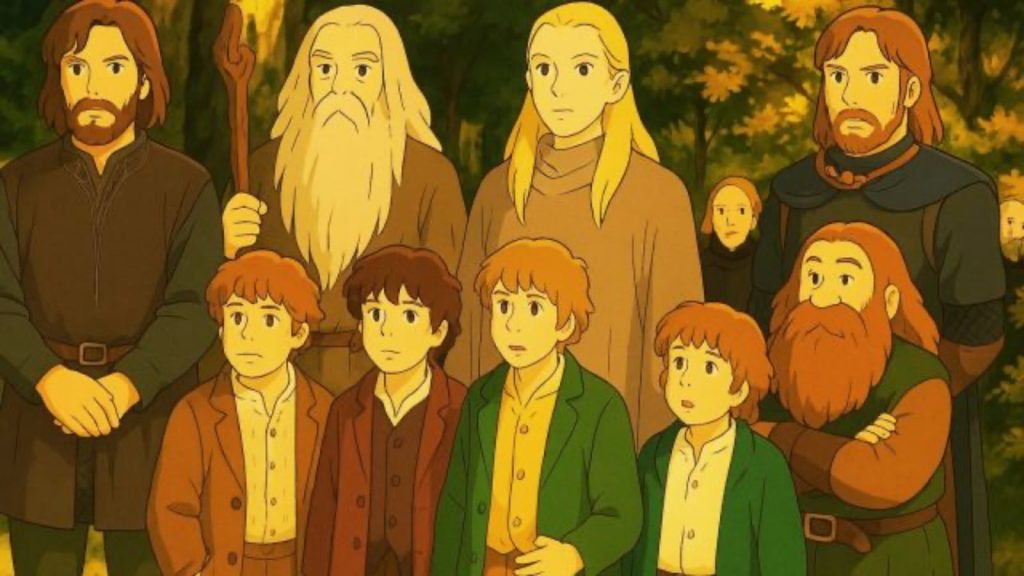There’s a quiet magic in every Studio Ghibli film, a beauty that lingers long after the credits roll. It’s in the way Chihiro stumbles while putting on her shoes in Spirited Away, a small but deliberate touch of realism. It’s in the four-second earthquake sequence in The Wind Rises, which took animator Eiji Yamamori over a year to complete, frame by painstaking frame. It’s in the way light filters through the trees in My Neighbor Totoro, reminding us that sometimes, the simplest moments are the most profound. Ghibli’s animation isn’t just about looking beautiful; it’s about feeling alive.
And yet, with the click of a button, AI now claims to “Ghiblify” anything.
Story continues below this ad
Since OpenAI’s latest update, social media has been flooded with AI-generated images in the style of Hayao Miyazaki’s films. Bollywood blockbusters, internet memes, even real-life photographs are suddenly reimagined with the soft watercolors and hand-drawn charm of a Ghibli movie. It’s whimsical. It’s impressive. But is it really art?
It’s not hard to guess what Miyazaki himself would think. The legendary animator has never hidden his disdain for AI-generated work. In a now-famous 2016 clip, when shown an AI-generated animation demo, he called it “an insult to life itself.” Some dismissed this as the grumblings of an old-school purist, but his words feel more relevant than ever. Because here’s the thing: AI can replicate Ghibli’s aesthetic, but it will never capture its soul.
Art isn’t just about the final image, efficiency, or automation. It’s about the hands that shape it, the stories woven into it, and the years of dedication behind it. It is about the imperfect, the irreplaceable, the deeply personal. Ghibli films are built on imperfections, on the human touch that breathes life into every frame. Animators spend years refining their craft, not just to make things look good but to make them feel real — the weight of a character’s step, the hesitation in their movements, the way the wind rustles through their hair. Miyazaki, a war child, translated his imagined childhood into his art, infusing every frame with memory, longing, and human experience.
Story continues below this ad
AI, for all its technical prowess, doesn’t understand storytelling. It doesn’t understand emotion. It scrapes and mimics, flattening the richness of true artistry into a one-size-fits-all template.
When we celebrate AI-generated “Ghibli” art without question, we’re not just admiring technology; we’re diminishing the effort and emotions that real artists pour into their work. Miyazaki’s films aren’t just visually stunning. They carry a touch an algorithm will never understand. AI can replicate styles, but it can’t replicate the intent, struggle, and soul that define true artistry.
The danger isn’t that AI exists. It’s that we’re too willing to accept its imitations as equals.
Of course, AI’s defenders argue that this is simply the next step in the evolution of art — that technology has always shaped creativity. But there’s a crucial distinction. The printing press, the camera, even digital animation tools empowered artists. AI, on the other hand, bypasses them entirely. It doesn’t assist; it replaces. It doesn’t elevate creativity; it automates it.
And then there’s the ethical dilemma. AI-generated images don’t appear out of thin air; they are built on the work of countless artists, often without their knowledge or consent. OpenAI’s latest rollout was so controversial that within hours, it had to restrict certain styles — due to copyright concerns. That alone says everything.
But beyond the legal and ethical issues, there’s a more fundamental question: What do we lose when we replace human artistry with instant, machine-generated imitation?
ChatGPT is built on thousands of human ideas, making it inherently unoriginal. Yet, people mock and celebrate its outputs, forgetting they wouldn’t exist without the original human touch. AI doesn’t create — it harvests the ghost of something real.
And, the magic of Ghibli isn’t just in how it looks — it’s in why it was made. And that’s something AI will never understand. So, if an AI-generated “Ghibli” still looks impressive to you, ask yourself: Do you love art? Or do you love that it was made without the burden of effort?
sudhanshu.mishra@indianexpress.com


